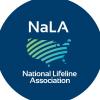Affordable Connectivity Program (was Emergency Broadband Benefit Program)
States are Relying on the Federal Affordable Connectivity Program to Close the Digital Divide
With the common aim of ensuring that all people and communities have the skills, technology, and capacity needed to reap the full benefits of our digital economy, each of the 50 states is currently drafting a digital equity plan through what one official called “the largest demonstration of participatory democracy that our country has ever seen." The states are tasked with developing long-term objectives for closing the digital divide by addressing the needs of eight "covered populations"—incl
The Affordable Connectivity Program and Rural America
Households in rural America are overcoming significant headwinds as they sign up for the Affordable Connectivity Program (ACP) benefit at a higher rate than urban counterparts. Through April 2023, ACP enrollment data shows that: 15% of all rural households have enrolled in ACP and 14% of households in metro or urban areas have enrolled in the benefit. Even this modest difference is striking given the tensions that buffet rural residents as they consider enrolling in ACP.
The Benton Institute ACP Performance Tool
The Affordable Connectivity Program (ACP) is at an inflection point. Launched in early 2022, ACP provides 17 million households up to $30/month in subsidies to offset the cost of broadband. But the program faces two critical challenges. First, less than a third of eligible households currently participate in the program—mainly because the people who could benefit most from the subsidy are unaware that it exists. The Federal Communications Commission (FCC), local governments, and digital equity groups are stepping up efforts to improve ACP awareness and participation.
Half of ACP-Eligible Households Still Unaware of the Program
After a year of operation, half of all households eligible for the Affordable Connectivity Program (ACP) internet subsidy are unaware of the benefit. A January 2023 survey of low-income households finds that over 50% say they have never heard of the program or do not know anything about it. Although many eligible households are unaware of ACP, the survey points to ways in which policymakers and community leaders can encourage enrollment. First, outreach can make a difference.
Understanding and Driving Enrollment in the Affordable Connectivity Program
Fitting the monthly cost of a broadband subscription into a low-income household budget is difficult, to say the least, because of the costs of competing necessities like lodging, food, and healthcare. These financial pressures—and unexpected expenses—keep too many people in the U.S. from subscribing to home broadband service—or cause them to drop service at times to make ends meet. During the COVID-19 pandemic, Congress recognized these obstacles for low-income people and created a program—first called the Emergency Broadband Benefit Program—to reduce the monthly costs of connectivity.
It’s No Time to Disarm in the War Against the Digital Divide
The pandemic spurred policymakers and community leaders around the country to create programs to connect those without home broadband service or computers. These programs have had an impact. New government data show sharp increases in broadband and computer adoption in the 2019-to-2021 time frame. Initiatives such as the Affordable Connectivity Program (ACP) have helped address “subscription vulnerability” for low-income households. With progress evident, it is time to extend and build on the ACP and local affordability programs.
Can Smartphones Bridge the Digital Divide? The Answer Is Complicated
Aldo Soledad relies on his phone's data plan to take care of his internet needs. When it comes to living without home internet, he isn't alone. Millions of Americans are without broadband, either because of a lack of access or because they can't afford it.

National Lifeline Association Seeks $30/Month Lifeline Benefit
The National Lifeline Association (NaLA) submitted a petition to the Federal Communications Commission requesting that the FCC temporarily waive the Lifeline reimbursement amounts in the Commission’s rules until Congress allocates additional funding for the Affordable Connectivity Program (ACP) or passes broader legislation to reform the Universal Service Fund (USF) and pay for the ACP in an alternative manner.
Federal internet benefits at risk in Connecticut. Could a state bill fill in gaps?
Connecticut has been building its digital infrastructure to get more households online. Those efforts rely on federal funding to help the state address these gaps, particularly in places with limited access to affordable high-speed internet. But a federal program reducing monthly internet bills and providing device subsidies for lower-income households will sunset at the end of April if Congress does not renew funding.
Cox Continues Commitment to Digital Equity with Low-Cost Internet as Federal Government ACP Closes
The projected end of the federal government's ACP (Affordable Connectivity Program) will leave many low–income households looking for affordable internet options. Nearly 23 million people nationwide rely on the $30 subsidy ($75 for tribal land) to defray the cost of internet service or secure internet service for free.

